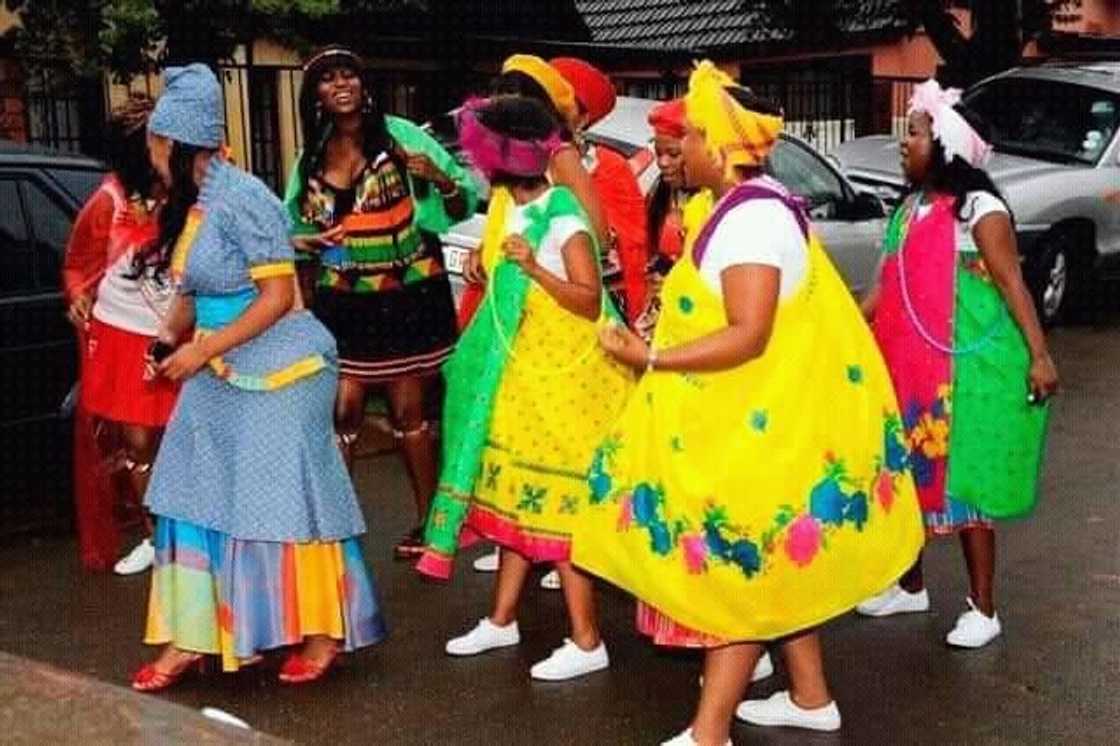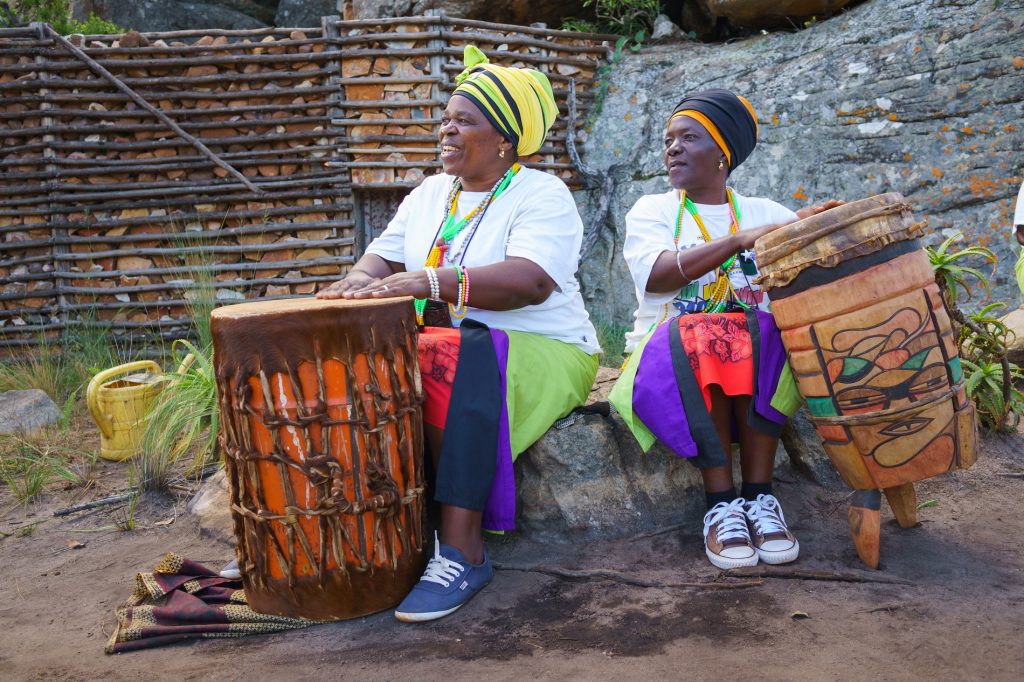What Does South African Culture Today Mean?
What Does South African Culture Today Mean?
Blog Article
Rumored Buzz on South African Culture Today
Table of ContentsExcitement About South African Culture TodaySome Ideas on South African Culture Today You Should KnowHow South African Culture Today can Save You Time, Stress, and Money.What Does South African Culture Today Mean?The Basic Principles Of South African Culture Today South African Culture Today Things To Know Before You Buy
This adheres to with vocal singing and drum pounding. The new bride and bridegroom after that consult with the elders and chat about the significance of their union. A matter of relevance in Zambian villages is the passing away of enjoyed ones. All members of the village placed cash, time and initiative with each other for the burial of the deceased.Throughout the grieving duration; males stay outside your home and the ladies stay inside your home of the deceased. After discussing the deceased, the village walks to the location of interment to claim their last farewells. Songs and dancing is a really important aspect of the Zambian society. The numerous tribal systems have their very own dance forms; however, makishi is common amongst all tribes.
The Ultimate Guide To South African Culture Today
When it concerns songs, drums are utilized one of the most, with a selection of drumming ceremonies. In Zambia, majority of the individuals are Christian; Protestant and Roman Catholic. There are small teams of Muslims and Hindus, with the remainder complying with regional indigenous tribal beliefs.

South African heritage and culture is profoundly varied, and contains several various teams of people who each have their very own traditions and beliefs. Having such a diversity of people and cultures is what makes South Africa so special. In the real feeling of the expression, we are a rainbow country.
Making it the 7th on the checklist of nations with the most Portuguese people in it outside of Portugal. Portuguese is not just a culture, yet it is additionally a language and a citizenship. Portuguese people stem from the nation of Portugal in Europe, nevertheless, due to Portugal (like numerous various other countries in Europe) discovering the globe and conquering various other countries during the 15th 20th centuries, South Africa has what we call Portuguese South African's living in it.
Indicators on South African Culture Today You Need To Know
Amongst the noticeable features of the topography is a plateau that covers virtually two thirds of the center of the country. The plateau facility increases towards the southeast, where it climaxes in the Drakensberg array, part of an escarpment that separates the plateau from the coastal locations. The Drakensburg consists of Champagne Castle, the highest top in the nation.
The area north of the Witwatersrand, called the bushveld, slopes downward from east to west toward the Limpopo River, which creates the global border. The western section of the plateau, the middleveld, additionally descends towards the west and varies in elevation between the highveld and bushveld. Between the Drakensburg and the eastern and southern shoreline, the land comes down to the sea.
Nearer the coast there is a low-lying plain called the eastern lowveld. Southwest of the plateau the country ends up being considerably extra arid, giving means to the stony desert of the Great Karroo, verged on the eastern by the reduced, better watered plateau of the Little Karroo. Separating the dry southern interior from the sandy littoral of the southern coast and West Cape is an additional range, the Langeberg.
The Buzz on South African Culture Today
The nation's racially, ethnically, and politically divided history has actually generated nationwide and subnational icons that still function as symbols of the nation, and others signs that are approved just by specific groups. The monuments to white settler conquest and political dominance, such as the Afrikaner Voortrekker ("leader") Monument in Pretoria and the Rhodes Monolith honoring the British colonial realm building contractor and Cape prime minister Cecil Rhodes, continue to be sectarian symbols.
The initial contemporary citizens were the San ("bushman") hunter-gatherers and the Khoi ("Hottentot") individuals, who rounded up livestock (South African culture today). The San might have existed for countless years and left evidence of their presence in hundreds of old cave paints ("rock art"). Bantu-speaking clans that were the ancestors of the Nguni (today's amaZulu, amaXhosa, amaSwazi, and vaTsonga individuals) and Tswana-Sotho language teams (today's Batswana and Southern and Northern Basotho) migrated down from eastern Africa as early as the fifteenth century

The two former republics of the Orange Free State and Transvaal (South African Republic) were developed by Afrikaner inhabitants who beat and dispossessed the Basotho and Batswana. Lesotho would have been by force integrated into the Orange Free State without the extension of British defense in 1869. The best unification of the nation resulted from the South African Battle (18991902) in best site between the British and both Afrikaner republics, which lowered the nation to wreck at the beginning of the twentieth century.
Afrikaners traditionally considered themselves the just real South Africans and, while granting complete citizenship to all locals of European descent, refuted that condition to individuals of color till the autonomous transition of 1994. British South Africans preserve a feeling of social and social connection to Great Britain without compromising their identification as South Africans.
Rumored Buzz on South African Culture Today
The diversity and fragmentation within ethnic collections and the equilibrium of tensions between those groups during the twentieth century avoided interethnic civil conflict. While intergroup tensions over resources, entitlements, and political supremacy remain, those disputes are as most likely to pit Zulu against Zulu as Zulu versus Xhosa or African versus Afrikaner.
From colonial India, British merchants and managers brought the bent metal decorative roofing systems and slim shoelace job pillars that still exemplify the terraces of homes in communities and cities throughout the country. Homes of worship add an essential architectural element also in the smallest communities. Along with the skyrocketing steeples and classic stonework of Afrikaans Dutch Reformed churches, Anglican churches, synagogues, mosques, and Hindu shrines give variety to the religious building scene.

Butchering and the developing of standard cereal beer are necessary in safeguarding the participation and a good reputation of the forefathers who are considered the guardians of great lot of money, prosperity, and well-being. Indian communities preserve their indigenous culinary customs and use them on Islamic and Hindu routine and ceremonial celebrations. Afrikaners and Coloured people gather at weekends and unique occasions at multifamily barbecues called braais, where neighborhood bonds are strengthened.
Due to the fact that this was the key financial enterprise of both black Africans and white colonists, dispute in between those teams centered on the belongings of grazing land and livestock. In 1867, the largest diamond deposits on the planet were discovered at Kimberley in the west central area. The riches from those areas aided fund the exploitation of the greatest gold reef in the world, which was uncovered on the Witwatersrand in 1886.
8 Easy Facts About South African Culture Today Described
This resulted see this website in misconceptions and intentional misrepresentation in their explanation the dealings of white inhabitants and government officials with African principals throughout the early american period (South African culture today). In the facility of African books, some facets of public and chiefly "tribal trust" land period were protected, and also in white backwoods, forms of common tenure were still practiced in locations with African areas
After the democratic change of 1994, programs for land restitution, redistribution, and reform were set up, however progress has actually been sluggish. The white minority still controls eighty percent of the land. Following farming land invasions in Zimbabwe, the Division of Land Matters has actually vowed to speed up land redistribution.
Report this page